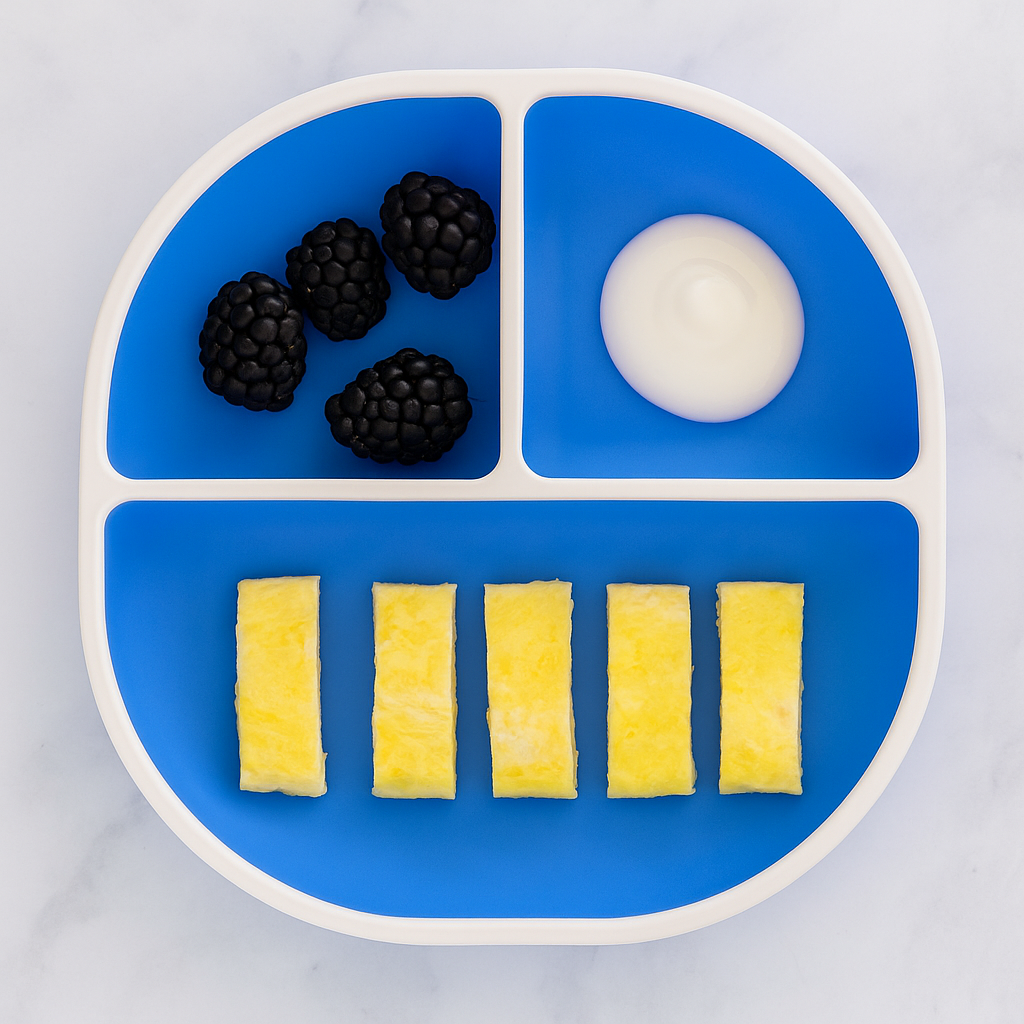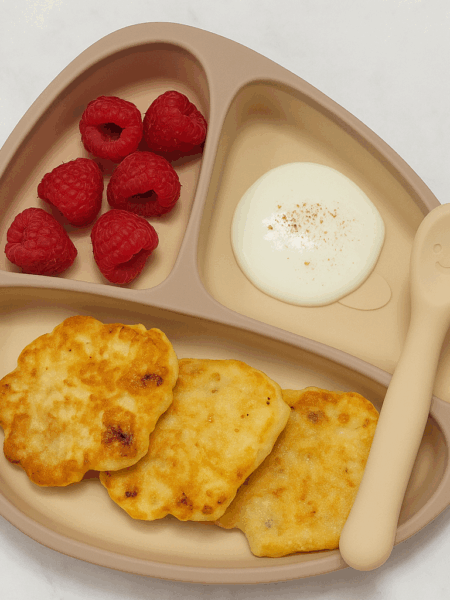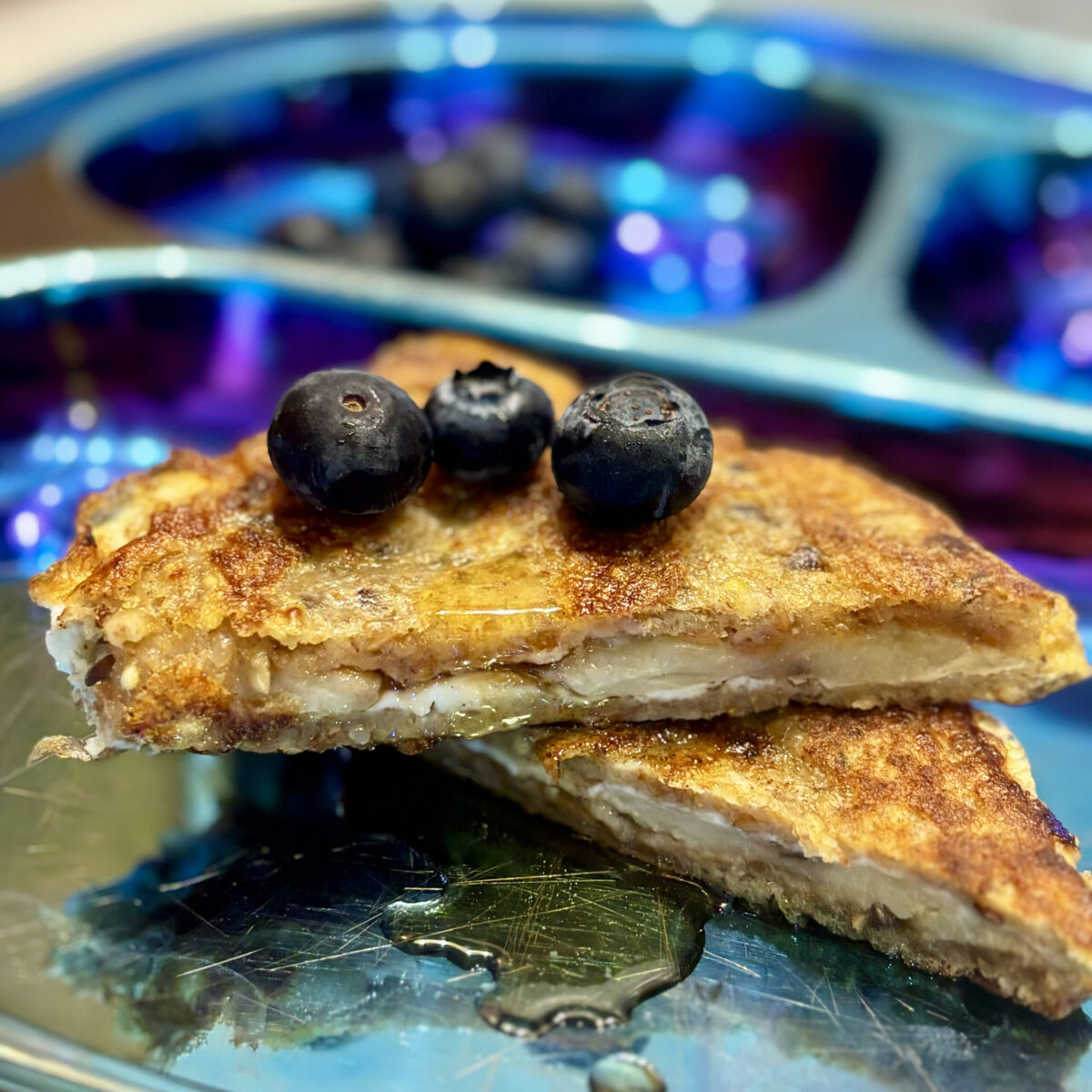
Introducing Eggs to Infants (Baby Omelet Recipe)
Description
Omelets have that just-right texture ideal for fledgling eaters; given how sensitive they can be to pretty much everything (pan, heat, movement, et al.), however, they are less ideal for fledgling cooks. Thankfully, there’s a quick and dirty method, one so easy and foolproof that it will get you a solid egg each time you make it: high heat and brevity. (Fun fact: what follows is basically the same technique used at Chinese restaurants to make the chopped eggs in your fried rice!)
When you're ready to move on and up to different egg preps, check out our fluffiest scrambled or our whipped eggs!
Ingredients
Instructions
Prep
-
Place the smallest pan you have at your stove’s Medium level–say, a ‘5’ or ‘6’–for five minutes and do nothing. Just let it be.
-
While it heats, beat an egg with a splash of your chosen liquid (see Ingredients) and your seasonings (if using) until blended.
Cook
-
When the pan is hot enough that you feel heat on your hand when holding it a foot or so above the pan drop a small swipe of butter (or equivalent) into the pan; swoosh it around until it melts.
-
Turn OFF the heat and immediately pour the egg mixture into the pan, swooshing it around so that it covers the surface; it should bubble and sizzle very quickly.
-
After roughly fifteen or twenty seconds, use a fork or spoon to roll the egg up into a cigar-shaped form by lifting one edge up and pushing it over the other parts of the pan. If egg oozes out of the roll, or if some parts look undercooked, you can either press down on them to sear and/or flip the roll so they directly touch the pan.
-
Shake off the pan and onto a plate. Cut to cool.
Serve
-
Chop into small strips for 6-8 month-olds and small squares for a 9-12 month infant. Season or sauce how you see fit, but be sure and wait until egg has cooled before serving.
Adapt
-
Once your child is familiar with the taste and texture of the egg, you can begin to add ingredients into the omelet, such as cheese, bits of meat, and so on. To do so, drop in the ingredients right after you’ve covered the surface with the egg; do so in the area of the pan that appears most cooked.
For you–and, eventually, your child–this omelet also makes for an easy and very satisfying breakfast sandwich. Just cut and toast bread, bagel, biscuit, et. al; place the omelet on top of the bottom piece of bread; and top with avocado, bacon, and/or hot sauce.










